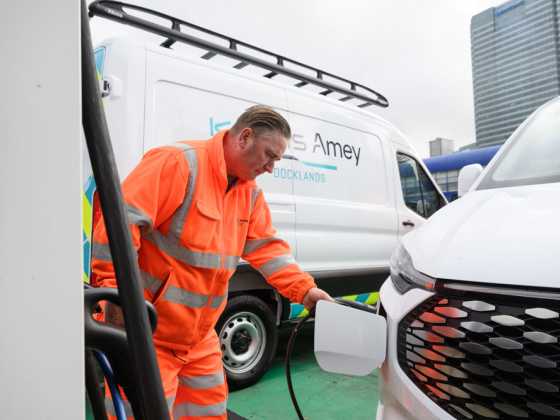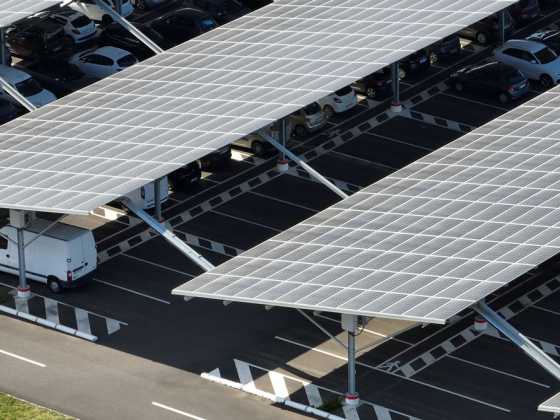The way forward for electric commercial vehicles

With the deadline ending the sale of all diesel and petrol vans by 2030 firmly in the forefront of fleet operators’ minds, one of the biggest challenges for commercial vehicle fleets will be ensuring sufficient power and charging infrastructure is in place to support those operators seeking to switch to electric vehicles, writes Denise Beedell, policy manager for vans and urban, at Logistics UK
Logistics UK is calling for a fair and equitable way of paying for upgrades to power supplies used for charging fleets. Operators electrifying their van fleets face significant challenges with the cost of acquiring new vehicles and installing charging infrastructure at their depots, and can also face significant additional costs if the depot requires a power upgrade to ensure sufficient energy supply. Logistics UK members have reported costs of over £1 million for increasing power supplies to a depot, which creates additional financial pressures for operators seeking to decarbonise their vehicle operations.
Substantial grid reinforcement and power upgrades will be needed to support an increased reliance on electricity to power new vehicles, especially as we near 2040 when the demand for more power supply and cabling for charge points (either public or depot) will increase. However, in the shorter term, there are other options available to fleet operators seeking to electrify parts of their fleets more quickly. Flexible connections that allow additional energy purchase during specific hours can help to manage costs, and other solutions, such as smart charging, battery storage and solar panels can be utilised to assist with energy demand more easily than moving straight to a full energy supply upgrade at depots. These type of upgrades, known as sole asset extensions, can take on average 18 months to complete and usually come at a significant cost. For large mixed fleet operators opting for electrification of their fleet, this is often the ultimate solution. By working closely with the Distribution Network Operator (DNO) supplying power to fleet depots, future costs and delays can be minimised by carefully planning for the power needs as the larger vehicles in the fleet electrify.
It is vital that sufficient infrastructure, such as charge point equipment and space, is in place to support the switch over to electric vehicles for now and in the years ahead. As well as sufficient power supply, there will need to be a clear timeline for the roll out of public charging infrastructure. As a result, Logistics UK has called on government for commitments to ensure the public charging network can be used by commercial vehicles of all types and sizes. Public charge points must be clearly signposted and designed to accommodate all types of vehicles, ensuring that there are sufficient large parking bays, with longer charging cables and more rapid charging, particularly on the strategic road network. Commercial operators – including SMEs without off-street parking – must be able to rely on accessing public charge points when needed.
Current economic and supply chain issues are making new vehicle acquisition very challenging. Additionally, many fleets expect to have only one more vehicle replacement cycle left before the phase out dates for sales of new diesel and petrol vehicles, and therefore it becomes even more important that operators have confidence in their decarbonisation plans before committing to significant investments for upgrading their fleets and depots in order to meet net zero targets.
To support longer term business investment plans about the net zero agenda and decarbonisation of commercial vehicle fleets, government must ensure timeframes for fiscal incentives relating to commercial vehicle decarbonisation are adequate and not ended without sufficient notice. A clear timeline mapping the key milestones for infrastructure and government support for the sector will help with decarbonisation plans across all commercial fleets. Logistics UK has also called for a fundamental review of regulatory weight thresholds for zero-emission tailpipe vehicles to acknowledge the realities of increasing gross vehicle weights for battery electric and other non-fossil fuel vehicles and to ensure operators do not need to increase vehicle journey numbers to deliver the same amount of goods currently delivered by diesel vehicles.
Given that many fleets have only one more vehicle replacement cycle left before the 2030 phase out date, decisions need to be made now to enable operators to meet this deadline. Replacement cycles of five to seven years are the norm across the van sector. However, with current economic and supply chain pressures making new vehicle acquisition more challenging, government must help to provide certainty about the path to electrifying commercial vehicles so that businesses have the confidence to invest in fleet decarbonisation plans, before committing to significant investments in order to meet net zero targets.
Overall, while progress is encouraging, there are still challenges that must be overcome before the UK’s commercial vehicle fleets reach net zero. Logistics UK will be working on behalf of its members to ensure all levels of government understand what our sector needs to achieve this.






